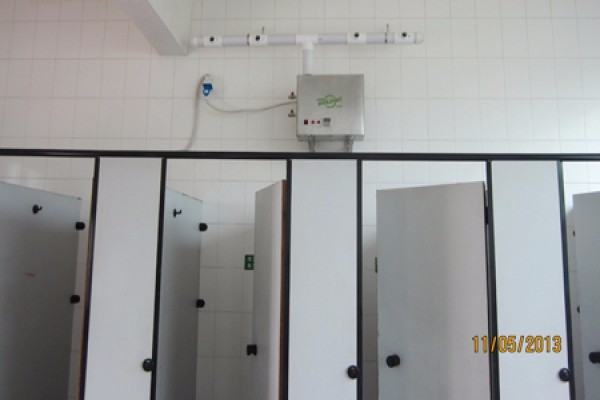Three methods can be used for industrial deodorization
Up to now, according to the method of deodorization process, whether to add water and dry/wet methods for deodorization are divided into wet, semi dry, and dry deodorization skills. Wet deodorization skills are relatively experienced, with high speed and simple operation. The traditional limestone/quicklime gypsum flue gas deodorization process uses calcium based deodorants to learn the calcium sulfite and calcium sulfate generated by sulfur dioxide oxidation. Due to their low solubility, they are prone to planning and blockage in deodorization towers and pipelines. Double alkaline or flue gas deodorization skills are a way to overcome the shortcomings of limestone - a brief planning and development method.
After incineration, deodorization, also known as deodorization of flue gas, deodorization, and deodorization skills, can be divided into the following five methods based on the type of deodorant: based on calcium carbonate (limestone) calcium, based on the basic method of magnesium and sodium sludge in MgO, On the basis of NH3 ammonia method, according to the organic base of the organic base. The economic activity of skills widely used in the world is the calcium method, with a share exceeding 90%.
Wet deodorization technology is the use of a solution containing wet deodorization learning agent for deodorization treatment under mud and water conditions. This method has a fast deodorization reaction speed, simple equipment, and high deodorization rate, but it has widespread and serious corrosion, high operating protection costs, and simple secondary pollution, etc.
The learning of dry deodorization skills and the implementation of product processing are tedious. There is no discharge of waste acid, sewage, equipment corrosion, and to a small extent, there is no obvious cooling and purification process. The purified flue gas with high temperature smoke helps to expand the chimney exhaust, reduce secondary pollution, but the deodorization rate is low, the reaction speed is slow, and the equipment is large.

Semi dry deodorization technology refers to deodorization under dry conditions when deodorant deodorization becomes dry and moist (such as the regeneration process of activated carbon from water scrubbing), or under moist conditions, and deodorization is handled under dry conditions, such as spray dry flue gas deodorization technology. Especially under wet deodorization conditions, the advantages of semi dry deodorization in dry conditions, such as high reaction speed and deodorization rate compared to wet deodorization, and the absence of waste acid discharge from wastewater, the benefits of simple disposal of products after dry deodorization have been widely concerned and observed by many people. According to the goal of deodorization, it can be divided into two methods: concession and borrowing.
Secondly, projects related to application areas and considerations
Wet flue gas deodorization (FGD) technology is widely used in various large and medium-sized thermal power plants due to its high deodorization rate, quality of charcoal, mature and stable operation cycle, small load changes, and experience in flue gas disposal. It has become an important flue gas deodorization skill in thermal power plants both domestically and internationally. But the process also has a strong corrosive medium, high smoke air temperature SO2 learning fluid has a high solid content, strong wear resistance, and requires high-quality construction skills and difficult protection against corrosion problems in the field of equipment anti-corrosion. Due to this, equipment corrosion control has always been one of the key issues affecting equipment operation for a long time.
The article originates from a deodorant manufacturer http://www.scneng.com.hk/
-
06-11
"Environmental Doctor" Du Siyuan: Environmental Protection is a Lifestyle Attitude
There is a Hong Kong compatriot in Jiangmen who often frequents various farms and plantations, walks in mechanical factories, and is seen by others as the nemesis of environmental problems. He conside
-
03-16
Deodorant manufacturer: Deodorants reduce soil pollution
Waste is a chaotic mixture of various components. The accumulation of debris on the surface of soil can cause some chemical reactions, releasing harmful gases, which can lead to soil pollution and eve
-
12-01
Deodorant Manufacturers: Differences between Microbial Deodorants and Traditional Deodorants
The waste that is not needed in our daily life and work is called waste. Due to the large amount of waste discharged and the complex categories, there are great difficulties in reducing waste and deod
-
11-08
Application of Deodorant Manufacturers in Domestic Waste Treatment
Garbage is the waste generated in everyone's daily life and work. Due to its large discharge volume and complex and diverse composition, it poses great difficulties in reducing and deodorizing wa
